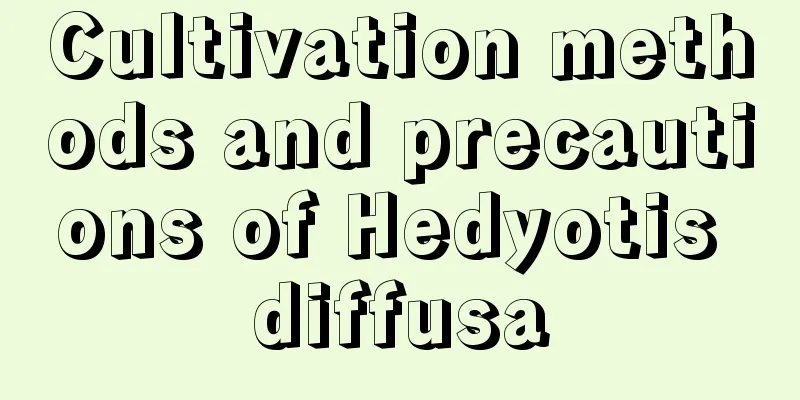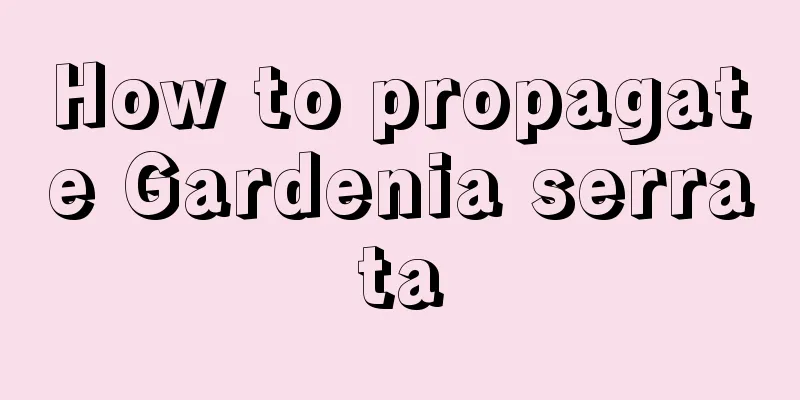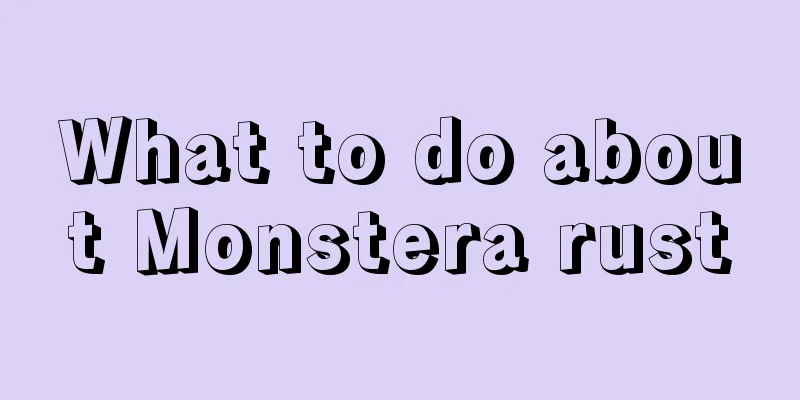Cultivation methods and precautions of Hedyotis diffusa

1. Maintenance methods1. Soil: It likes to grow in soil rich in nutrients. When preparing the soil, you can mix it with garden soil + leaf mold + base fertilizer. Such soil is more conducive to its growth. 2. Water: When growing Houttuynia cordata, try to keep the soil in the pot moist. It has high requirements for water, but you still need to pay attention to drainage during the rainy season to avoid water accumulation and root rot. 3. Fertilizer: When it is growing vigorously, it needs to be properly topdressed to meet the nutrients required for its normal growth. It does not need too much, just apply thin fertilizer frequently to avoid root burn due to inability to absorb. 4. Sunlight: Its quality depends on the light conditions. If there is sufficient light, it will grow well. If the light conditions are not good, it is likely to grow too tall. 2. Breeding techniques1. Seed treatment: After collecting the seeds of Hedyotis diffusa, place them on hard ground and rub them with a wooden stick to remove the wax on its surface. Its seeds are very small, so don't use too much force when rubbing, and be careful not to crush the seeds. 2. Reproduction: Houttuynia cordata is usually propagated by sowing. After pre-treatment, the seeds are evenly sprinkled on the soil and then covered with a thin layer of soil. Spray the soil with water, provide shade during the day and wait for germination. 3. Problem diagnosis and treatment1. Pests and diseases: Houttuynia cordata has relatively few pests and diseases. The most common ones are some underground pests. If you find them, you need to use cyperus sulphide to poison them in time. 2. Wilting: It is a plant that is afraid of both drought and waterlogging. When cultivating it, you must strictly plan the frequency and amount of watering. If it is not appropriate, it will wilt or even have yellow leaves. IV. Other issues1. Toxicity: Houttuynia cordata is non-toxic. It is a detoxifying drug in itself and has a good effect of clearing heat and detoxifying. There is no need to worry about poisoning when breeding. 2. Can it be grown indoors: Houttuynia cordata can be grown indoors. It can be placed in a well-lit location indoors and ventilated frequently, and it will grow well. |
<<: Allen's breeding methods and precautions
>>: Cultivation methods and precautions of celandine
Recommend
When is the best time to plant the king bean?
Planting time of King Bean The climbing bean king...
What is the best fertilizer for rat tail palm?
Fertilization time for rat tail palm Rat tail pal...
How to propagate Xanthoceras sorbifolia
How to propagate Xanthoceras sorbifolia There are...
Disease and insect pest control of Lipia orchid
Sheath Rust Leaves infected with this disease usu...
How often should potted strawberries be watered?
How often should potted strawberries be watered? ...
Can trumpet creeper be planted in autumn? How to plant it?
1. Can it be planted in autumn? Trumpet creeper i...
How to deal with the copper coin grass after it blooms? Should it be cut off after it blooms?
Treatment after flowering of copper coin grass 1....
The reason why the leaves of the fiddle-leaf fig droop and how to save it
1. Reasons for leaf drooping 1. Soil compaction: ...
The efficacy and function of Trichosanthes
effect Clears heat and relieves cough Trichosanth...
How often should I water the Chinese evergreen?
How often should I water the Chinese evergreen? T...
How long is the growth cycle of aloe vera?
Introduction to Aloe Vera Growth Aloe vera is mai...
How to fertilize Tillandsia?
Fertilizer selection: Potassium fertilizer, phosp...
Common varieties of bellflower
Purple bellflower This is a relatively common var...
How to plant peach seeds
1. Time The timing of planting is very important,...
How is the fortune tree cultivated? Is it grafted?
1. How was it cultivated? At present, the money t...









